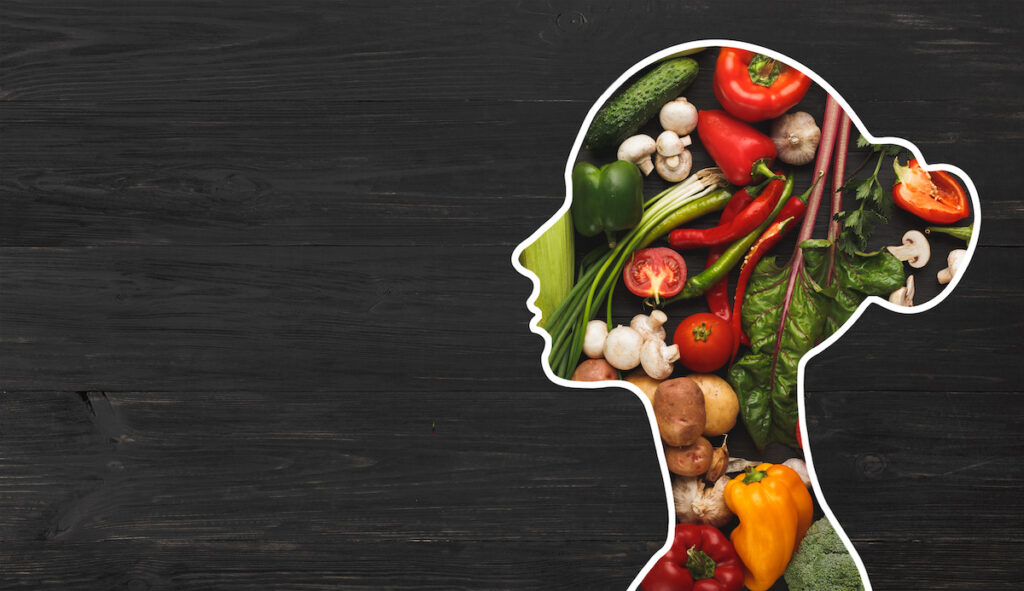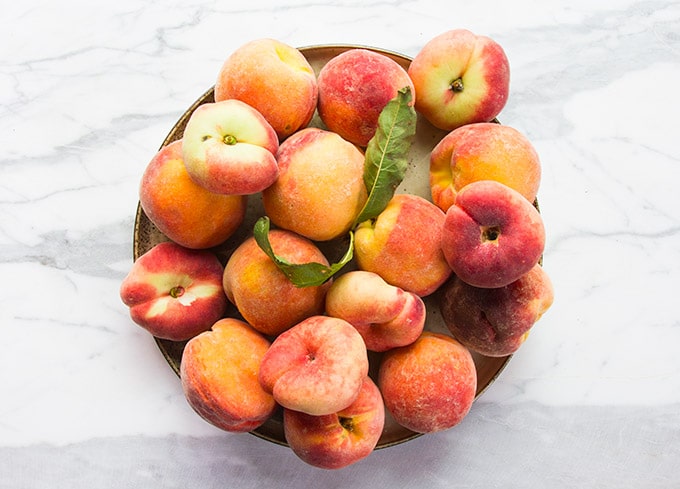This post may contain affiliate links. Please see our disclosure for more information.
According to the ancient science of life from India known as Ayurveda, all matter consists of some combination of the five elements of Air, Earth, Water, Fire, and Ether.
These five elements have properties that affect our bodies and minds when we take in food and drink, and when we interact with the world around us.
In this way, what we eat changes how the body and mind expresses itself.
Food can make the difference between sickness and health, or between sadness and joy. It is pretty powerful stuff.

I think that one of easiest ways to make this idea tangible is by introducing the 3 great qualities of nature, also known in Sanskrit as the “maha gunas.“
The maha gunas are three, and they are Sattva, Rajas, and Tamas.
The maha gunas are a part of the universal consciousness that expresses itself in the mind.
In Ayurveda, foods are categorized according to these maha gunas, and we can talk about how each category affects your mind.
By choosing foods from a particular guna, you can encourage their associated qualities in your mind and body.

Sattvic foods
Sattvic foods make the mind relaxed and serene. These are easy-to-digest foods that impart stability and strength to the body.
Imagine a seasonally appropriate diet of well prepared vegetarian food that is freshly cooked, and gently spiced to promote flavor and digestion.
Sattvic food categories include vegetables, fruit, nuts, seeds, legumes, grains, and fresh dairy.
Sattvic food helps the mind and body feel calm, and I generally enjoy eating like this.
However, I still enjoy many things that do not qualify as sattvic, and are part of the next two categories.
Food & the Maha Gunas
| SATTVIC | RAJASIC | TAMASIC | |
| QUALITIES | Light, easy to digest; imparts stability and strength. Imparts harmony, balance, purity, health, and wellbeing. | Overstimulates and irritates body and mind due to excessive pungency, sourness, saltiness, or spiciness. Imparts activity, restlessness, stress, and anger. | Lacking in inherent vitality; harmful to mind and body. Imparts lethargy, dullness, laziness, and lack of awareness about self and others. |
| FOODS | Seasonal vegetables and fruit, rock salt, nuts and seeds, raw honey, whole grains, cow’s milk, butter, yogurt. Food is lightly cooked in ghee, gently spiced, and low in salt. (Excludes onions, and garlic.) | Garlic, onions, chilis, alcohol, caffeine, refined sugars, drugs, excess salt, and eating in a hurried manner. | Stale, putrid (foul-smelling), fried and fatty foods, leftovers, meat, eggs, canned foods, frozen foods, and processed food. |
Rajasic foods
Rajasic foods overstimulate and irritate the body and mind because of properties that are too spicy and burning, overly sour or salty, or otherwise extreme.
These include lightly processed foods, fast foods, alcohol, caffeine, quality meats.

Rajasic food make you feel hot, excited, passionate, energetic, and alert.
People who live in cold climates, or who are very active, especially benefit from these foods.
Tamasic
Tamasic foods are considered to be harmful to mind and body. They contribute to dullness, lethargy, and toxic buildup in the body.
Unfortunately, most of us (myself included), eat them all the time.
They include stale food, putrid food, overly fatty food, meat, old food, leftovers, overly processed foods, and frozen foods.

Interesting right? Since we are taught not to waste, there are some definite ethical dilemmas here if you think about using up leftovers, and how frozen foods help many busy people cook meals from scratch.
Don’t worry. There are best practices that can help to mitigate the negative qualities inherent in any of the foods.
If you’d like to learn more about how to manage your daily cooking and cook with leftovers, let me know in the comments below.
Many Ayurveda practitioners stand a strong stand against leftovers. I don’t. I think we can find a balance. What do you think?
Become a Happy Eater
Connecting with how your food makes you feel is the first step for anyone learning how to cook Ayurvedically. It so happens to be the first training module in my signature 6-week program, Happy Eater.
In Happy Eater, we talk about Sattva as the energy of Calm, Rajas as the energy of Passion, and Tamas as the Heavy energy.
Students are invited to analyze their diet using handy cheatsheets, and grow their awareness of how their food is making them feel.
This is powerful, because awareness is always the first step toward real change.
I encourage you to visit the Happy Eater landing page, and see if this program is right for you.

Want to stay in touch?
Sign up for the Good Gut Ayurveda newsletter and receive my free recipe book: “14 Recipes to Boost Your Gut Health.” These recipes are some of the most popular in the community. I’m sure you’ll love them too! Sign up here, and get the gift.
